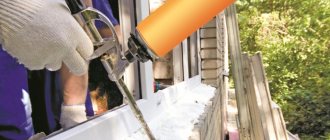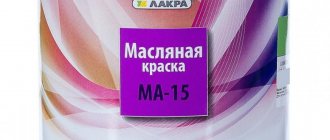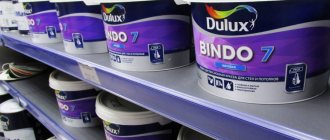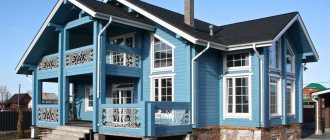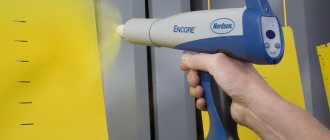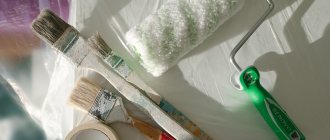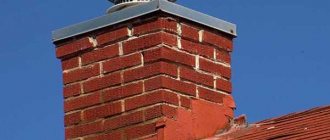What should paint resist?
Black painted fence
The fence is exposed to snow, wind and rain. In summer, the coating on it peels off due to ultraviolet rays, and in winter and autumn - due to moisture. What paint to choose for a cemetery fence?
When purchasing you need to consider:
- Water resistance.
- Application technique. The material should lie smoothly and not require special experience or special tools.
- Appearance. Naturally, paint should decorate the fence, and not spoil it.
- Wear resistance.
- Interaction with metal. If the material does not fit well, there is a risk of detachment.
- Resistant to sunlight. Ultraviolet light often causes changes in color and texture.
Preparation and painting
Considering the fact that coloring has to be done away from home, you need to have with you everything you need to complete such work. If the previous layer of paint on the fence has become unusable, it must be removed. The fence is cleaned thoroughly until the metal is shiny.
The performer of this work should have a metal brush, a spatula, coarse sandpaper and a file at hand.
You will have to work hard here, but the result will be positive. After cleaning, the surface of the material is treated with an anti-corrosion compound, and after drying, also with an antiseptic compound. How to paint a fence in a cemetery? The more complex the design and the more intricate the patterns on it, the smaller the brush you will need for painting. The surface is covered thoroughly, without gaps. If you want to paint the fence in different colors, black is first applied, and after it dries, individual fragments are painted with a different color. When doing such work, you need to remember those to whom you pay tribute of memory and respect, mentally communicating with a loved one whose fence is being put in order.
How to paint a grave fence (2 videos)
Coloring is not an easy process. This is influenced by the fencing scheme and the presence of patterns. It is necessary to cover the surface carefully without missing the slightest gap. As you do this work, remember those you love and the tribute you are paying. In our country, it is customary to install fences around the grave. Firstly, in this way we outline the boundaries of the burial site. Secondly, this is a kind of obstacle for animals that accidentally wander into the churchyard. You can also attach a sign with the name of the deceased or a memorial wreath to it. You can see all sorts of fences in cemeteries! They are mainly made of metal, since metal, if properly processed, can last for many years. Therefore, a completely reasonable question arises: what paint to choose for painting a fence in a cemetery?And the point is not at all in the color of the solution (although white, blue, black, gilded, patina-like colors are traditionally used). The main thing is that painting provides reliable protection of the metal from corrosion and the harmful effects of external environments.
Paint for a fence in a cemetery will last a long time and be durable if you choose the right composition. The metal structure is painted with the following compositions:
Dark colors for fencing
The most common color for fences is black. But the primer comes in other shades:
- red;
- yellow;
- white;
- black;
- grey.
It is better to choose materials from the mid-price segment. This does not guarantee success, but it will make the choice easier.
Additional types of paint:
- Colored primer. It reliably protects the fence from corrosion and masks irregularities.
- Hammer paint. The nitro-based material is distinguished by its texture, which appears after drying.
- Enamel PF. A paint and varnish material that consists of highly dispersed pigments and varnishes. It covers the metal with a thin film, reliably preventing rust.
- Polymer coating. Contains polystyrene, solvent
When choosing a material, you need to take into account the drying time.
List of requirements for modern paint
To decide what paint to paint a metal fence in a cemetery
, you need to take into account its vulnerability to various influences and subsequently be guided by the established requirements for paint, here are the main ones:
- resistance to atmospheric temperature fluctuations, immunity to wind;
- inertness to the influence of ultraviolet radiation;
- providing reliable protection of metal from the influence of precipitation and wet soil using a waterproof durable film;
- lack of reaction to chemical exposure;
- resistance to the influence of the biological environment.
Choose paint with the following characteristics in the description:
- The purpose of the solution is metal work.
- Recommended for outdoor use.
- Technical characteristics of the coating: strength, durability, inertness to atmospheric phenomena, hydrophobicity.
- Decorative features: enamel, matte or glossy paint.
The most popular paints for fences are acrylic, oil and alkyd, and drying oil is used as a solvent. Each option has its pros and cons, but in recent years alkyd paints have taken the lead. When planning to paint the fence yourself, do not forget about a special face mask, as the paints are toxic.
Paint for a fence in a cemetery - which one to choose
Cans of paint for fencing
What is the best way to paint a metal fence in a cemetery? It is better to give preference to non-toxic enamels with anti-corrosion properties.
Universal
Universal dyes contain primer. They can also be applied to any material: wood, metal or plastic.
Universal materials are divided into two categories:
- Indoor safe, non-toxic.
- Those that cannot be used in closed spaces.
Dyes also differ in composition:
- Oily. They are not suitable for painting a cemetery fence because they do not like temperature changes and quickly lose color.
- Acrylic. Bright and durable, they can be used without worry.
- Rubber. They contain polyacrylic resins. This makes the material resistant to moisture, but unsuitable for indoor use.
- Epoxy. They protect the metal from low and high temperatures, so they are useful for hot and sunny regions.
Powder type of dye
It is a pigmented disperse system that is evenly distributed over the entire surface. Most often the substance contains:
- oligomers;
- auxiliary components;
- plasticizers;
- substances that accelerate hardening.
Unlike liquid analogues, such dyes have a number of properties:
- flowability;
- bulk density.
To apply the enamel you will need a spray gun.
Alkyd and oil paints
Alkyd enamels are superior in quality to oil enamels. They form a dense texture on the metal surface, which prevents moisture and dirt from entering. Alkyd dyes have other advantages:
- Fast drying.
- No shrinkage or cracks even after several years of use.
But there are also disadvantages:
- Possible fading after a few years. Oil-based dye needs to be reapplied regularly because it is affected by UV rays.
- If the surface is not cleaned well, the material begins to peel off after just a couple of months.
Most often, PF-133 and PF-115 enamel are used for painting metal.
Forge paint - stylish and durable
The composition contains a large number of anti-corrosion fillers - powder, fine glass. A distinctive property of forge paint is its ability to convert rust into a chemically neutral coating. As a result, the anti-corrosion properties of the paint are enhanced.
It is enough to apply blacksmith enamel to the fence once. There is no need to update it, since the service life of the coating can reach 20 years. Some compositions require preliminary priming. In this case, you need to buy a primer of the same brand as the paint.
Hammer paint - expensive and reliable
Hammer paint has the following properties:
- After application, it holds the color for a long time and does not fade.
- Repels dirt and water.
- Has anti-corrosion properties.
- Does not contain toxins dangerous to humans.
- Dries quickly after application.
- Creates a pattern on the surface that resembles shallow potholes.
Among the disadvantages of hammer enamel are the high cost and the need to remove the old coating before application.
Silicone paint
Painted fence at a cemetery
Silicone paint is not as durable as forge or hammer paint, but it is more versatile. This is a water-dispersed dye, which contains silicone resins. Water is used as a solvent.
Acrylic paints
Acrylic paints are made on a water-dispersed basis with the addition of polyacrylates. If the surface is properly prepared before applying the dye, the material will last for more than one month. However, you will still have to update it every few years.
Polymer coating
Polymer coating cannot be done independently, since painting requires a special heat chamber. Therefore, such materials are most often used in factories for building structures.
Pre-primer: types of mixture, which one to choose?
Before painting, it is recommended to apply a layer of primer to the metal - the solution not only reduces the consumption of paints and varnishes, but improves adhesion to surfaces, slows down oxidation processes and enhances the protective function of the structure. The primer differs in composition; the choice of solution depends on the degree of damage.
Types of soil:
- Passivating - thanks to chromic acid salts (chromates), the metal becomes less susceptible to moisture. The more chromates in the composition, the slower rust forms.
- Insulating – primer with the addition of epoxy or alkyd compounds. Economy option, suitable for black metals, parts are covered with a protective, water-repellent film.
- Phosphating – galvanized iron is most often processed; primer is more of a passivating composition (suitable for restoration of non-ferrous metals).
- Protective - contains phosphoric acid, which forms a water-repellent foam on metal, suitable for treating old, rusty structures.
- Inhibiting is a relatively new water-based composition that stops the formation of rust and increases shelf life.
Regardless of the composition and its purpose, the primer mixture is available in different colors and is never transparent - this makes it easier to notice missed areas when painting and paint over them.
By what criteria to choose paint: types and characteristics
Enamel helps protect metal surfaces from the negative effects of ultraviolet radiation and moisture. The main thing is to choose the right paint material. What should you know? Paint for metal surfaces differs in application temperature. To ensure that the layer lays evenly, follow the instructions on the can - if the temperature is +2° or +11°, then you need to paint the fence only at this temperature. Also, do not forget about the maximum indicators after the paint has dried: if the specified temperature is exceeded, the surface will begin to deteriorate. It is important to know what solvents can be used to dilute materials. Water-based paints do not have a strong odor, and with the addition of a solvent, not only the toxicity increases, but also the cost of the composition. There are enamels that can only be applied to a clean, grease-free metal surface, and there are paints for painting metal surfaces against rust - for heavily damaged parts (the composition contains solutions that remove old corrosion). Rust paint is applied directly to the untreated surface. Some compositions dry in 4-5 hours, while others dry in 11-12 hours. There are also differences in the method of application - for painting large areas it is recommended to use a roller (then the paint must be selected according to thickness), and for small structures (for example, a gate) it is more economical to use a brush. An important factor is the ability of the paint and varnish material to cover the color of the surface (hiding power). 1 liter of paint can take from 7-8 to 12-13 m2. The amount of paint consumed depends on the saturation of the previous layer. The final result is influenced by the chosen color: matte, semi-matte or a shade with added gloss. Some paints are intended for painting metal parts indoors, while others are suitable only for exterior facade work. It is better to choose 3 in 1 paints for metal - they are multifunctional. When painting a heating system or chimney, it is important to take into account the ability of the materials to withstand stress caused by high temperatures - the higher the heat resistance, the higher the quality of the paint and the longer it will last.
How to prepare a fence for painting
If you do not prepare the fence for painting, the material will begin to peel off within a few months. To clean metal from rust, dirt and old coating you will need:
- water;
- brush;
- sandpaper;
- primer;
- brushes
Preparation should proceed according to the following scheme:
- Remove dirt with a brush and water.
- Remove rust with sandpaper or an electric drill with an attachment.
- Apply primer.
- Sand it.
Universal paints
Today there are paints that can be used without preparing the surfaces for painting at all. Experts, anyway, advise that even when using such coatings, the surface should be cleaned of dirt and remnants of previous paints, as well as treated with sandpaper.
Paints with anti-corrosion composition are applied to metal even if there is rust on it. At the same time, they provide protection against further destruction of the metal. This type of coating is excellent for painting ferrous metals, cast iron and steel. There are also enamels containing anti-corrosion primer and substances that transform rust. They are applied to surfaces that have traces of rust without using primer. Such enamels can be used both on metal and reinforced concrete fences.
For fences made of non-ferrous metals, one-component enamels are suitable, which are produced using organic solvents, acrylic copolymers and corrosion-resistant pigments.
Detailed instructions for painting metal fencing
Hammer paint samples
Enamel helps protect the metal surface from aggressive environments, so painting is best done regularly. To work, you will need a brush, sponge or aerosol can, depending on the type of dye.
Choosing a time for painting
How to quickly paint a fence in a cemetery? Conditions are considered optimal for painting when the humidity does not exceed 80% and the temperature is from 5 to 35 degrees.
In winter, you should use closed spaces for work, and in summer, places protected from the sun and rain. In this case, the dye will last longer.
Preparing the Paint
For this it is better to use a thinner. This allows the pigment to be distributed more evenly over the surface, and the enamel dries faster.
When diluting paints and varnishes, the thinner must be added gradually, in small portions. You must strictly follow the instructions on the packaging, since excess will lead to smudges, and too little will lead to excess consumption of the substance.
Execution of work
The process of painting a fence
Once the tools are prepared and the fence is primed, you can start painting:
- It is better to install the fence first.
- Paint from top to bottom using even, wide movements with a sponge or brush.
- Wait until the first coat dries and apply another one.
- Cover the top with bitumen varnish, which will secure the result.
The process of cleaning the fence from paint
Painting a cemetery fence is an important element of grave care. If you choose paint, you can avoid the need to renew the coating for several years. Hammer and forge enamel are suitable for this purpose.
Selection of color and decorative effect
Choosing a color is not a problem these days. Paints from almost any company have a wide selection of shades. The paint finish can be glossy, semi-matte or matte. Even if you want to create your own unique tone, you can use the computer color selection service, which is provided in stores of this type.
You can purchase paint with a decorative effect. For example, coatings that create the effect of deformation or the effect of an aged surface are very popular.
For high-quality and durable painting of a metal fence, use the tips below:
- You should not prime the metal with a roller, as it drives air and moisture deep into the soil, which leads to rapid rusting;
- painting a metal fence should be done when the air temperature is in the range from +5 to +40C, and the humidity is 80-85%;
- do not dilute the paint with a large amount of solvent, as in this case it will lay down in a thin and transparent layer;
- Spray painting gives a more shiny and even finish than painting with a roller or brush.
Caring for a grave in a cemetery primarily involves maintaining an aesthetically pleasing fence around the burial site. The fence, as a rule, is made of metal, because this material is affordable and resistant to any environmental factors. However, even metal fences need additional protection before rust appears and require the use of high-quality paints and protective materials.
Paint selection
To determine which paint to choose, you need to know the types and quality characteristics of coloring compositions. The best of them will be a paint composition that is reliable, quick-drying, and has a long service life. Among these dyes are the following:
Modern manufacturers add a paint composition to the primer, since it is not an independent type of coating. But such a mixture is not always successful. Therefore, it is recommended to use primer at the preparatory stage, and not as an independent dye. When choosing it, you need to carefully study the composition.
PF paint is the most common for this purpose. But its popularity is not due to its high quality; people have simply developed a stereotype of painting with this particular material. Before painting, the metal surface must be degreased and primed.
Since PF takes a long time to dry, fencing can only be painted in warm, dry weather.
Hammer paint is a good paint because it has a number of advantages. It does not lose its original appearance over time, is not affected by moisture, looks great and serves as a reliable coating for a long time. And if you take into account how quickly it dries, then using this type of paint and varnish material for painting metal products is quite profitable.
The best option when choosing a coloring material is a polymer coating. But it is impossible to perform it in a cemetery. The coloring process takes place in special thermal chambers, and there is no such complex equipment in the cemetery. Therefore, fences are painted in this way at the stage of their manufacture and, already painted, are delivered to the installation site. But such a coating, taking into account the operating conditions of the material, is the most durable.
The polymer, penetrating deep into the metal, forms a single whole with it. This coating is not susceptible to environmental conditions and does not require further painting.
Forging paints are optimized for outdoor use. Therefore, if the grave fence is painted with this material, then it will not have to be updated for many years. This paint can be applied independently in a cemetery. This coating is not afraid of bad weather conditions, it does not lose its characteristic shine. This type of dye is expensive, but the high quality justifies the high costs.
On video: how to paint a metal fence.
